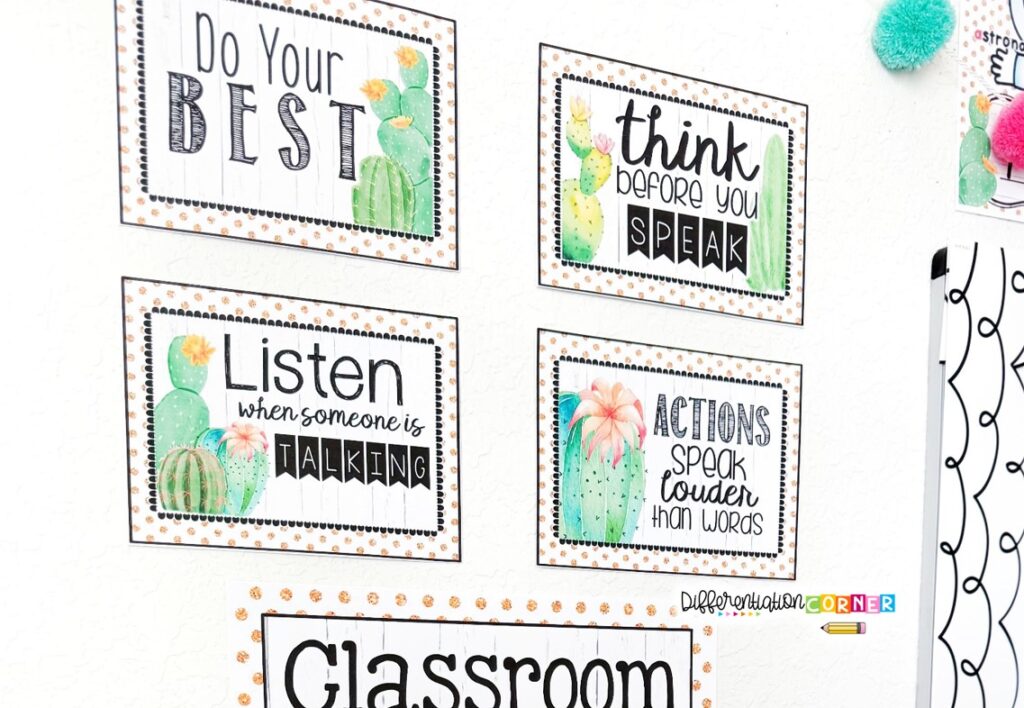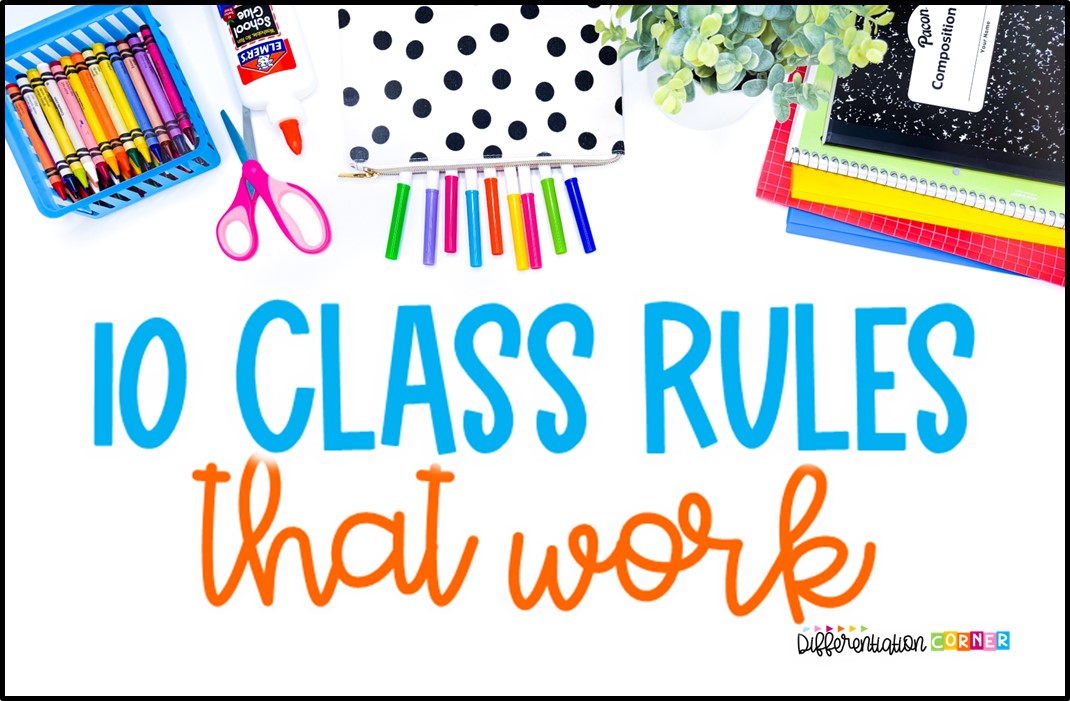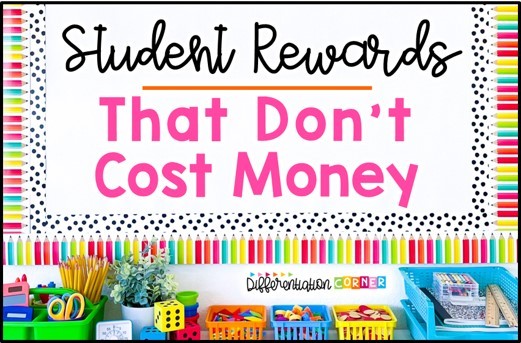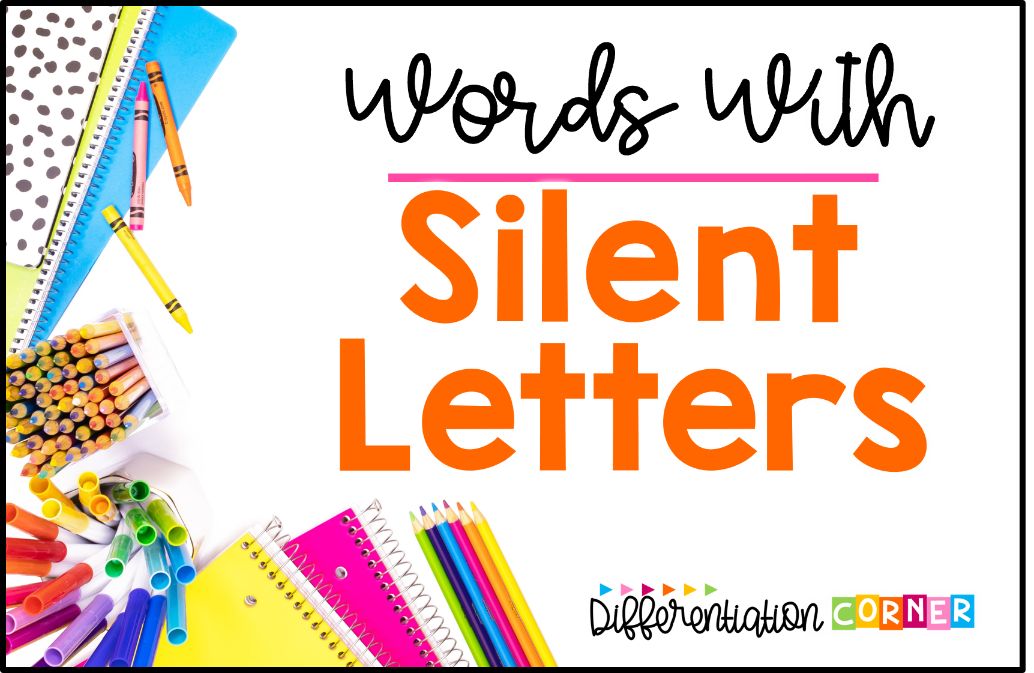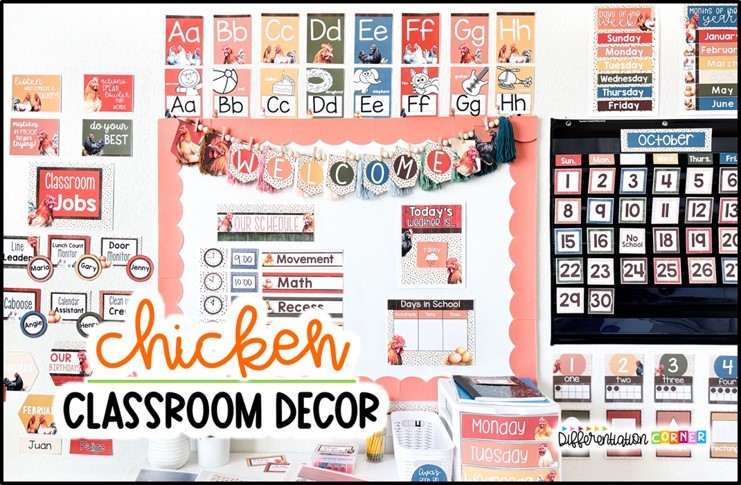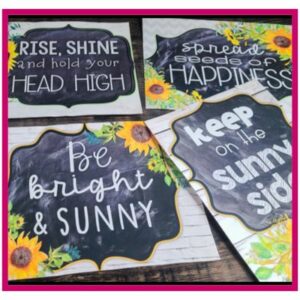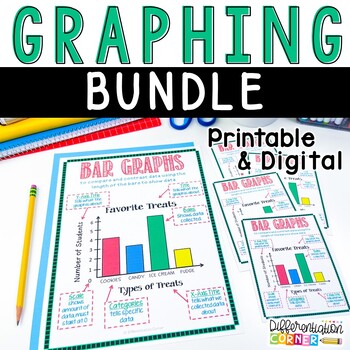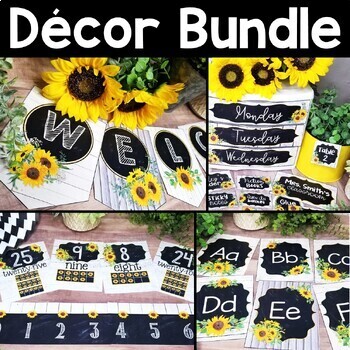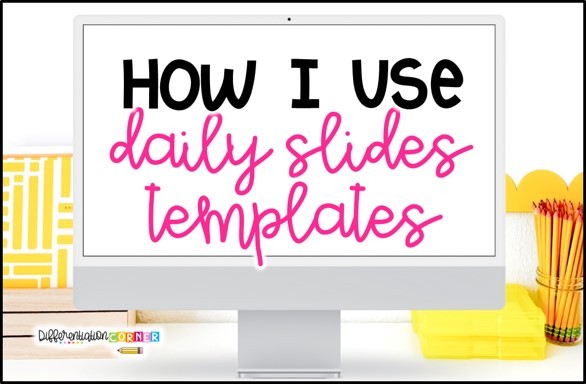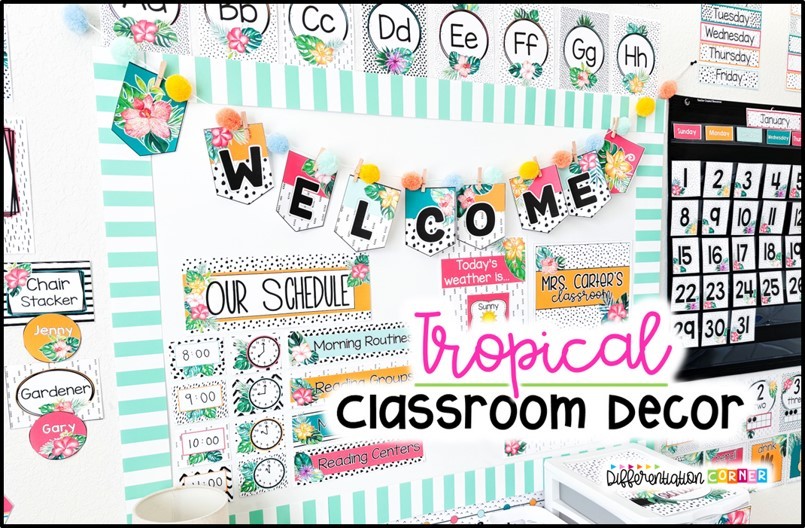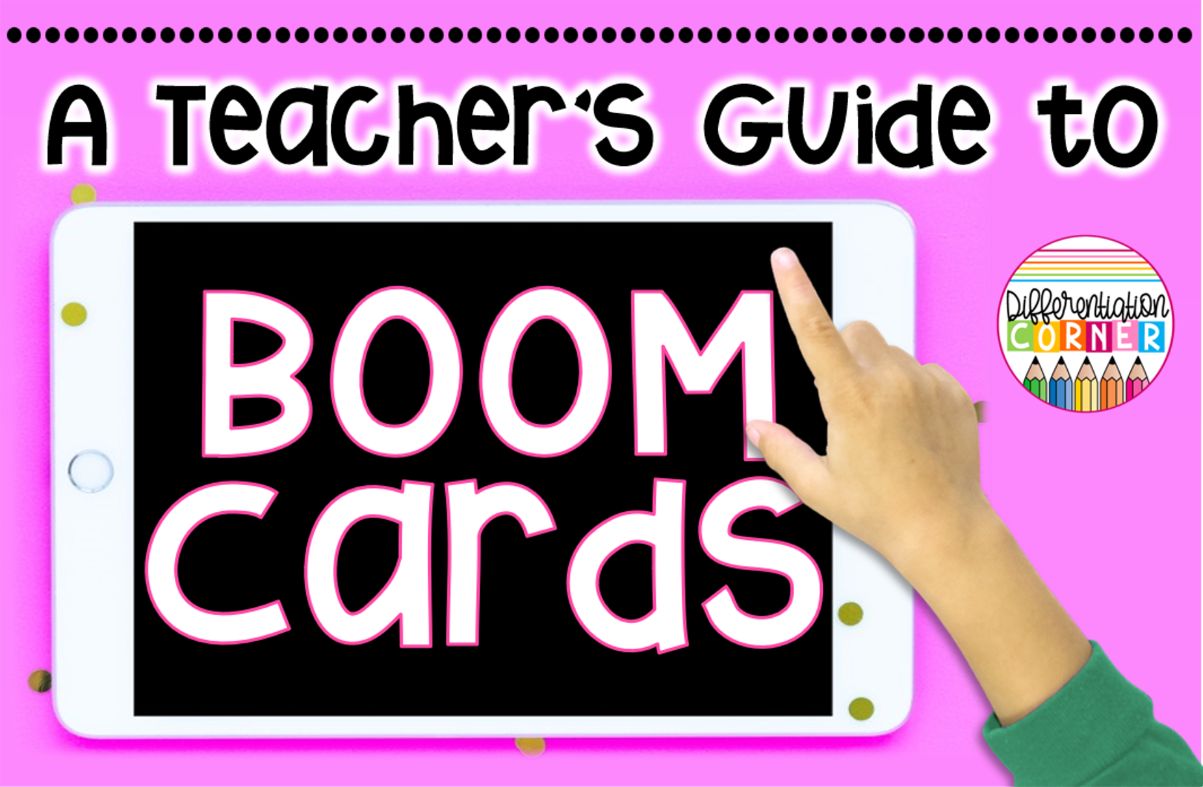In all seriousness, you can post a list of rules and expectations on day one, go over them with your most enthusiastic teacher voice, and still find yourself repeating “please sit down” twelve times before lunch.
The truth? Most rules in a classroom don’t fail because they’re wrong. They fail because they’re vague, forgettable, or feel more like a lecture than an actual plan.
Have you ever wondered why some teachers seem to have it all together while others feel like they’re one fire drill away from falling apart? Spoiler: it’s not magic. It’s not a better class roster. It’s clear, realistic rules that make sense to kids and are easy to teach, reinforce, and revisit.

Here are 10 rules in a classroom that actually work, why they matter, and how to get your class to follow them without loads of stress.
Why Rules in a Classroom Actually Matter
Rules and expectations are way more than a poster on the wall. They set the tone for how your room works. They tell your students: “This is how we do things here.”
Good rules help set students up for success and not feel controlled or micromanaged. They build predictability and a sense of belonging and safety. When students know what to expect, they stop testing their boundaries and start focusing on learning.
What Makes a Rule Stick
What makes rules in a classroom worth your time?
It’s short and specific. If it sounds like it belongs in a legal document, it’s not going to stick.
It’s actionable. Students should know what it looks and sounds like.
It supports positive classroom culture. Think respect, responsibility, and effort.
It’s teachable. You can model it, practice it, and talk about it with your class.
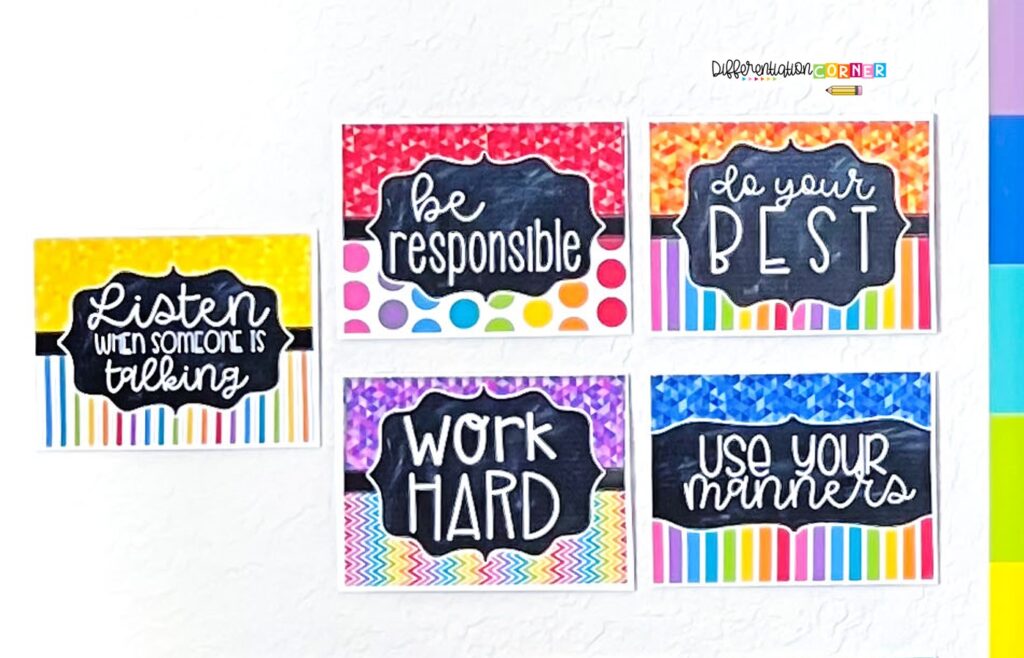
10 Rules in a Classroom That Actually Work
Here’s a list you can steal, tweak, or take straight to your whiteboard!
1. Be kind to yourself and others.
Kindness is more than just good manners. It includes tone, words, teamwork, and how we handle our frustration.
2. Follow directions the first time.
No repeats, rewinds, or reminders. This keeps your day moving and your voice intact.
3. Use supplies the right way.
Glue goes on paper. Scissors cut paper, Your pencil isn’t a sword.
4. Raise your hand before speaking or leaving your seat.
Simple rule. Big results. This reduces interruptions and room wanderers.
5. Listen when others are speaking.
This builds respect and helps kids listen with intention.
6. Take care of our space.
Clean up after yourself, push in chairs, return materials. Ownership makes the classroom feel like theirs.
7. Try your best. Even when it’s tricky.
Effort matters SO much. Praise this openly and privately when you see kids trying hard.
8. Keep hands, feet, and objects to yourself.
The ultimate boundary rule. Keeps everyone safe and focused.
9. Ask for help if you need it.
Let them know it’s always okay to speak up and get support. Self advocacy is hard for some kids.
10. Mistakes are part of learning.
Normalize it and make space for growth. This is a great class discussion topic! Mention famous inventors like Thomas Edison, and how many times he had to try to get a working light bulb. (or another relevant invention!)
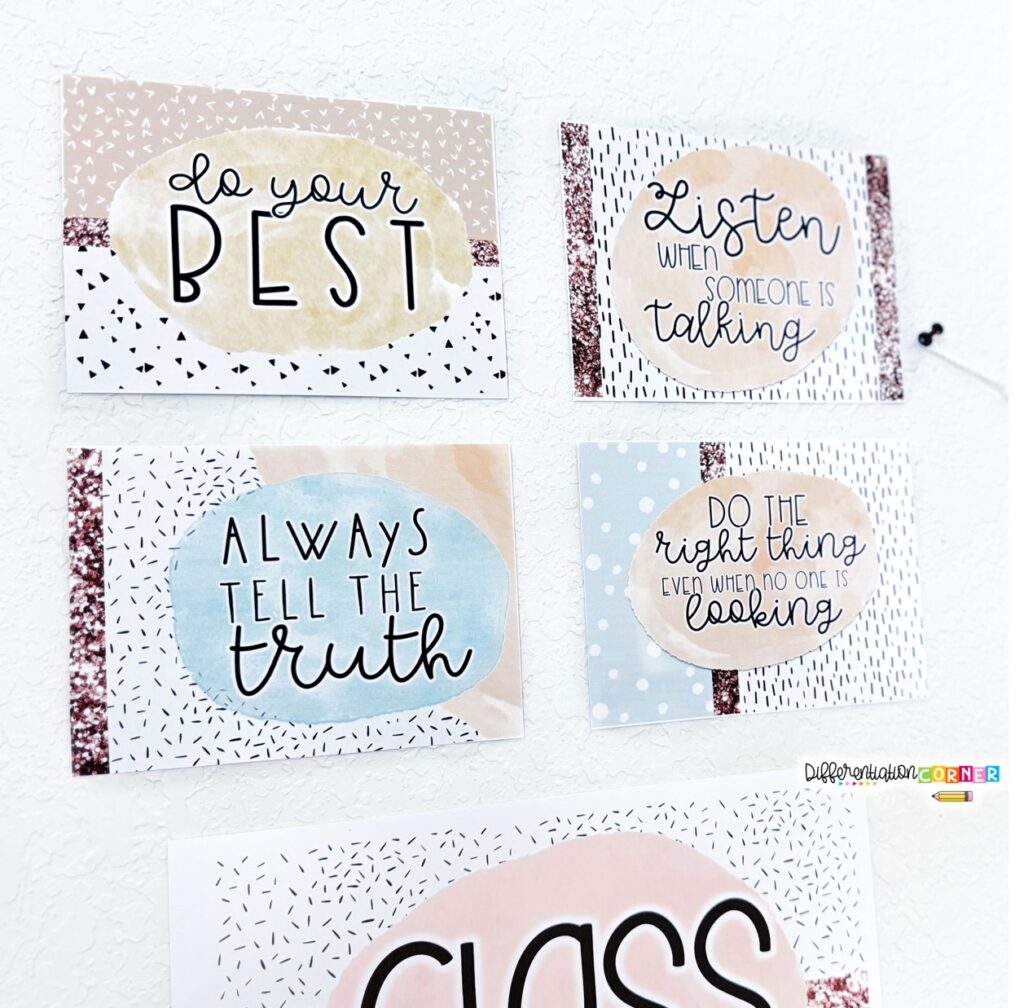
How to Teach These Rules
We have to turn these rules into good habbits.
Act them out. Model what each rule looks like, and even what it doesn’t look like. Let the kids practice, too. Have students act out the examples of following the rules, and the teacher models non examples.
Use Posters. Hang them in a highly visible spot where students can see them. Make them easy to read and easy to understand.
Talk about them regularly. Morning meetings, transitions, or quick reminders before activities are all good times to review rules in a classroom.
Re-Teach as needed. Quick refreshers work well. Mondays seem to be a popular day in my room! And after winter break!
Stay consistent. Praise students that follow the rules. Address when they don’t, calmly and clearly.
Read this to learn exactly how I teach classroom rules!
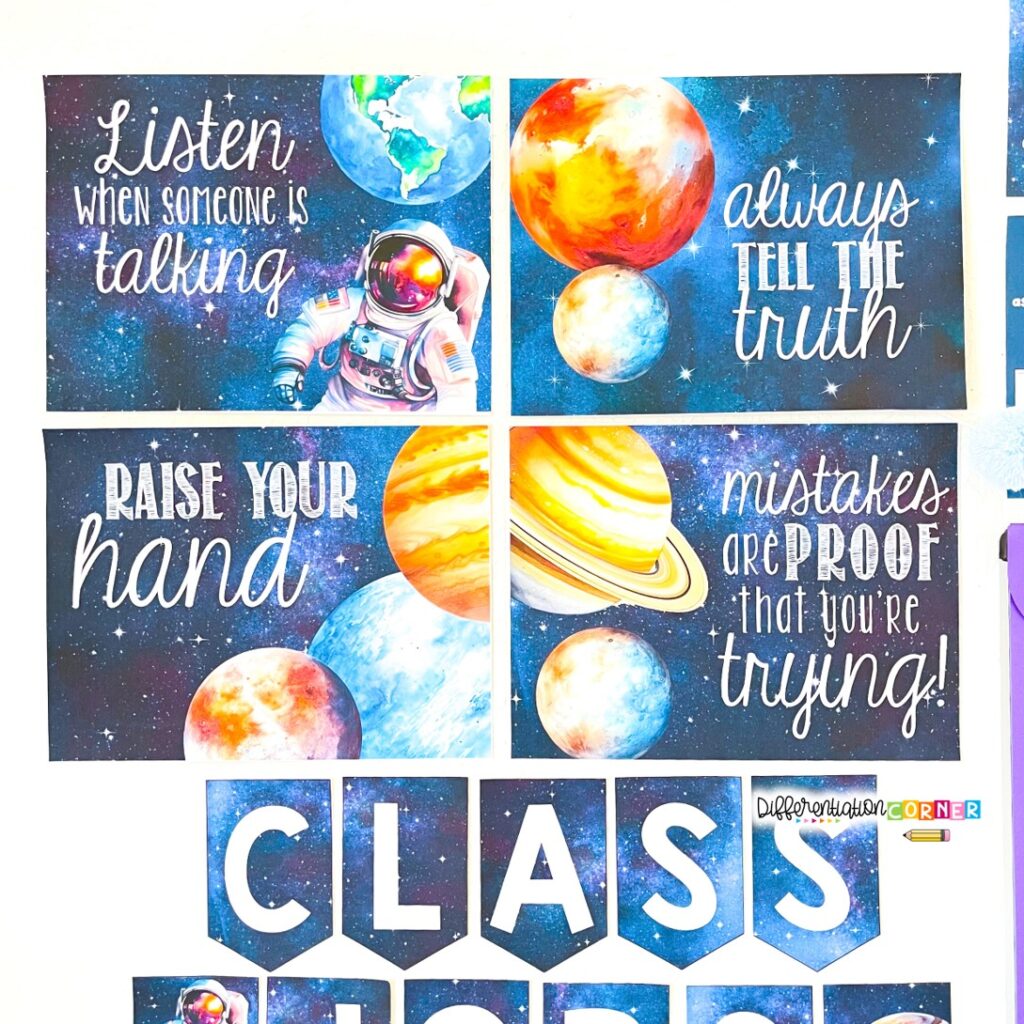
Ready to Make Your Rules Look Good?
If your rules need a little glow up, I’ve got you covered! My classroom rules posters templates are editable, easy to customize, and ready to match any classroom theme (rainbow, boho, space, nature…)
They’re designed to be visual reminders that students actually notice.
Click here to check out all available classroom rules poster sets!
Quick start guide: Pick 3-5 rules that match your style and your students’ needs. Teach them and post them. Revisit them often. That’s it!
